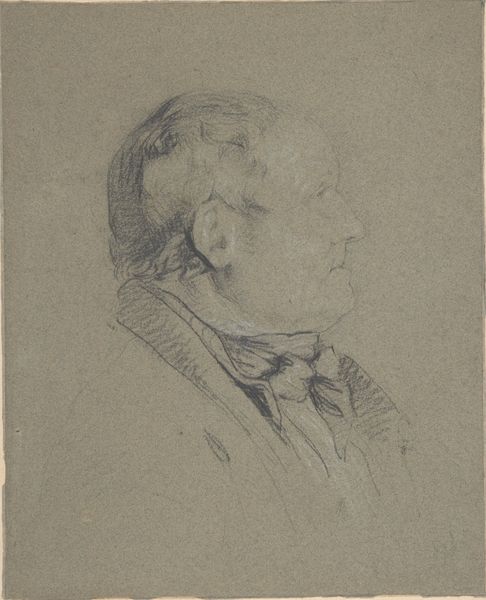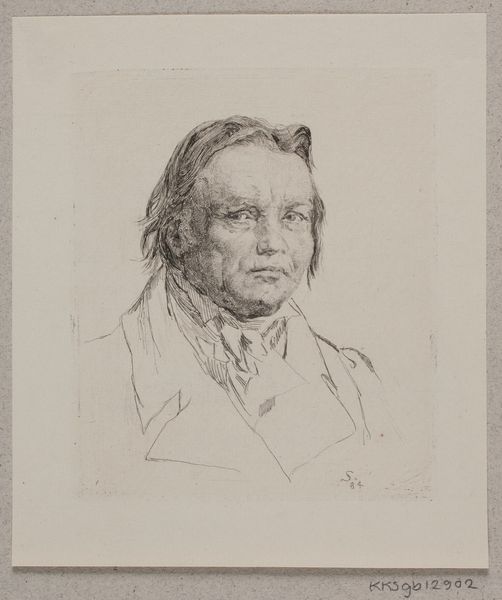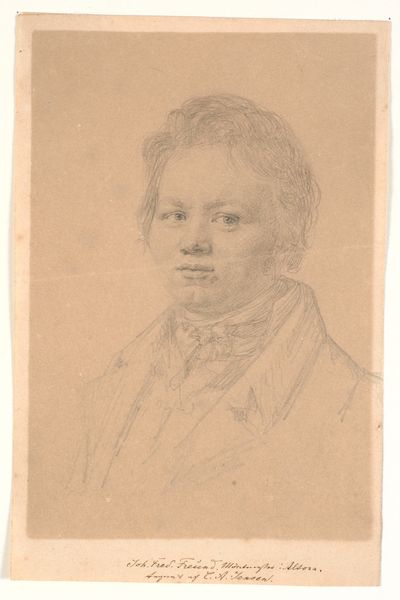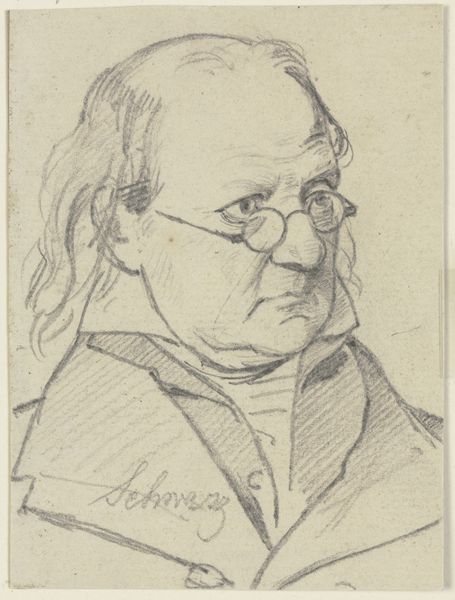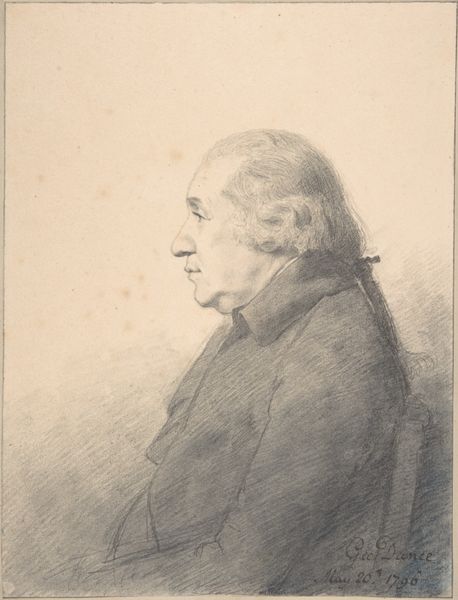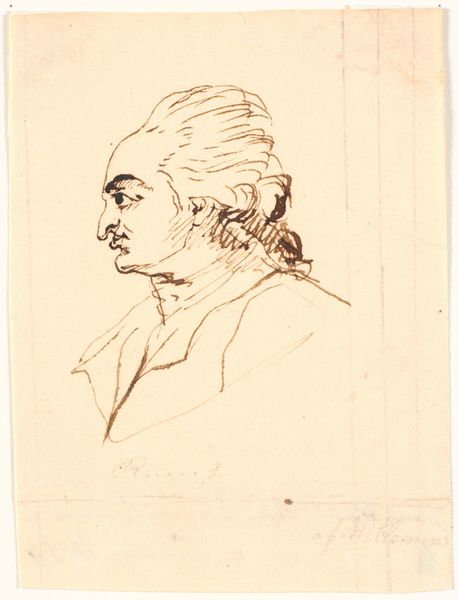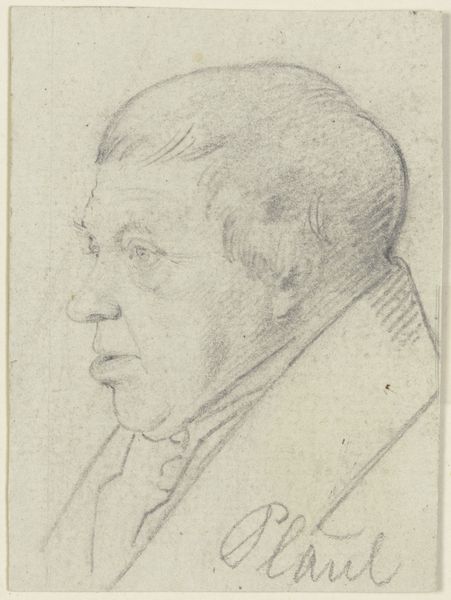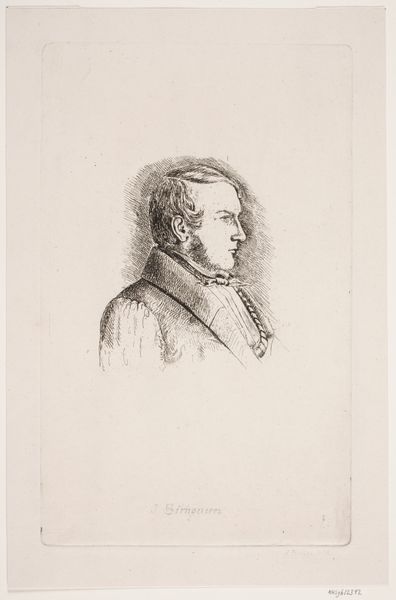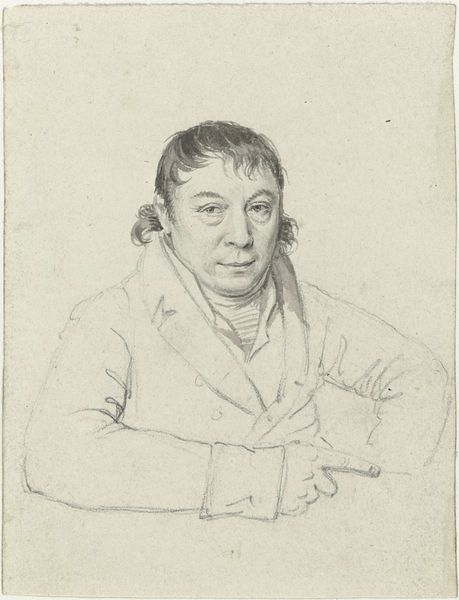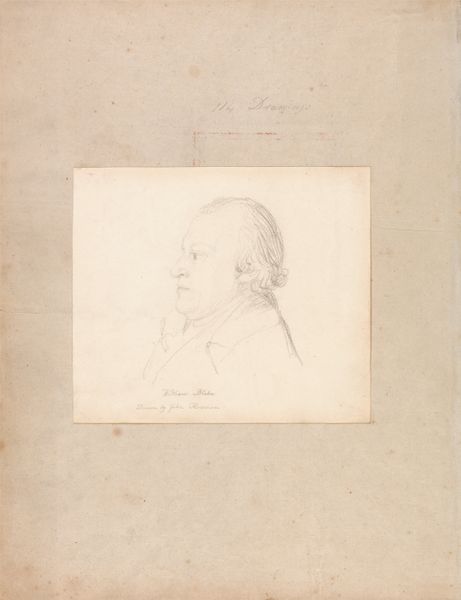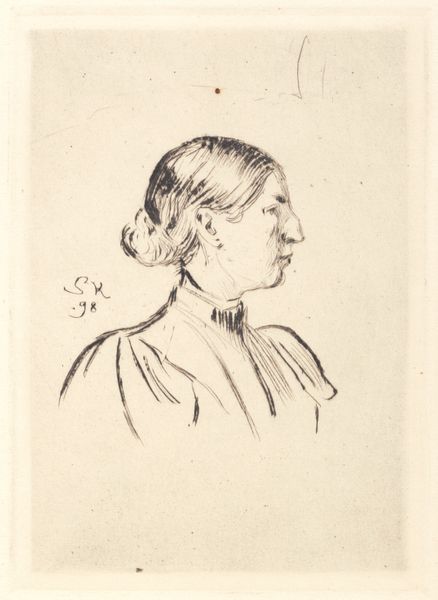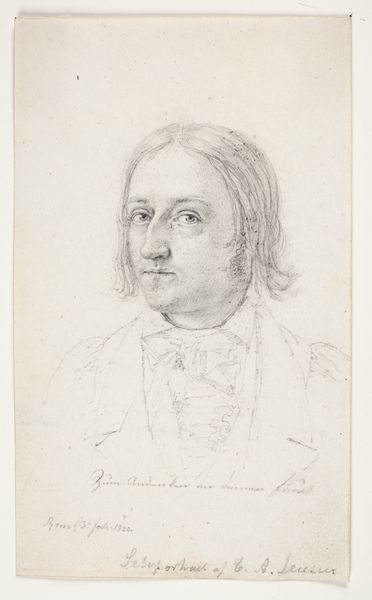
drawing, pencil
#
drawing
#
pencil
#
portrait drawing
#
realism
Dimensions: 152 mm (height) x 106 mm (width) (bladmaal)
Curator: Here we have a portrait, "mandsportræt 3/4 profil mod venstre," dating back to 1852. It's a pencil drawing currently held at the SMK, Statens Museum for Kunst. Editor: My immediate response is one of understated dignity. The delicate lines, the soft shading… it evokes a sense of quiet contemplation, a reserved presence from another time. Curator: Indeed. Let's consider the context. This portrait drawing by Andreas Fritz offers insights into the culture and labor of artistic practice during this period, providing tangible links to 19th-century modes of artistic production and representation. Editor: From a formalist viewpoint, it's fascinating to observe how Fritz uses the limitations of the medium to his advantage. The subtle gradations of gray achieved with pencil create depth and volume, despite the absence of color. Note the play of light and shadow that sculpts the face, giving it character. Curator: Considering the means of production, a pencil drawing like this would have been far more accessible than a painted portrait. Its relative affordability means we may well be seeing a member of the burgeoning middle class. How might his clothes tell us more about societal role and access to production and resources? Editor: Perhaps, but focusing purely on form, there’s an undeniable elegance in the economy of line. The artist doesn't waste a single stroke. Every mark contributes to the overall structure and feeling of the image. Look how the loose rendering of his hair contrasts against the sharper details of his facial features. Curator: Right, and consider the consumption and purpose: was this a preparatory study, or was it intended as a standalone work? How did portraits, like this, function within the structures of power and societal norms, contributing to, or perhaps challenging them? Editor: I can see your point. Regardless of his social standing, this rendering immortalizes a human subject from 1852 in minimalistic black and white strokes. It focuses attention, yes? Curator: For me, I view Andreas Fritz’s work as an instance from history—as material record—of representation, labor, class and societal practice from this era. Editor: Ultimately, viewing this piece with both perspectives allows appreciation of both material context, as well as a deeper sense of the visual dynamics at play.
Comments
No comments
Be the first to comment and join the conversation on the ultimate creative platform.
